If you want to create a beautiful and natural decoration for your garden, you can try making a bird feeder out of willow branches. This is a simple and fun project that only requires some basic materials and tools. In this article, we will show you how to make a willow bird feeder step by step.
You will love hearing the birds chirping and seeing the willow’s charm in your garden. Let’s get started!
1. How to make a willow bird feeder?
How to make a bird feeder from willow? This is a question that many bird enthusiasts want to know. A willow bird feeder is a simple and environmentally friendly way to attract birds to your garden.
You just need a few materials:
- A willow branch about 1 meter long;
- A sharp knife;
- String to tie;
- Bird food.
Here are the steps:
Step 1: Making the base
The steps to make a willow bird feeder are similar to making a willow angel; the only difference is that we don’t make the wings or head, but instead, we create a handle to hang it up.
You can use a mold or create a willow circle with the diameter you desire. Then, tie long willow branches evenly spaced, and tie them at the end to create a funnel shape for the bird feeder.
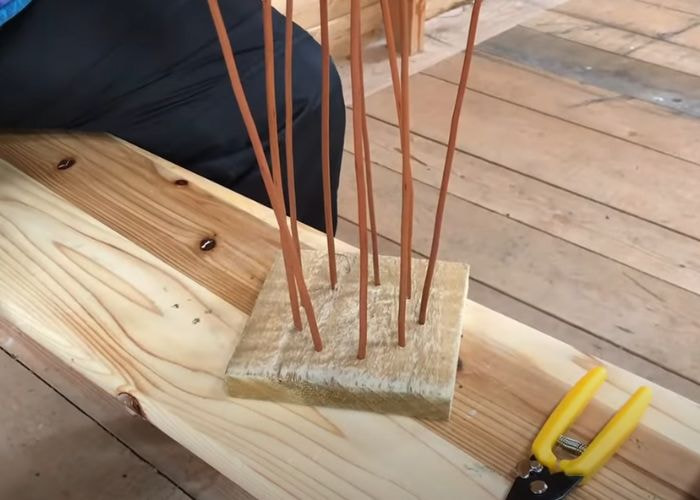
Step 2: Weaving the willow
Take more willow branches and begin weaving them around the main branches from the base. Weave the branches tightly together, alternating above and below the horizontal branches of the base.
Continue weaving until you reach the desired height for the bird feeder. This will form the main body of the feeder and provide structure to hold the bird’s seed.
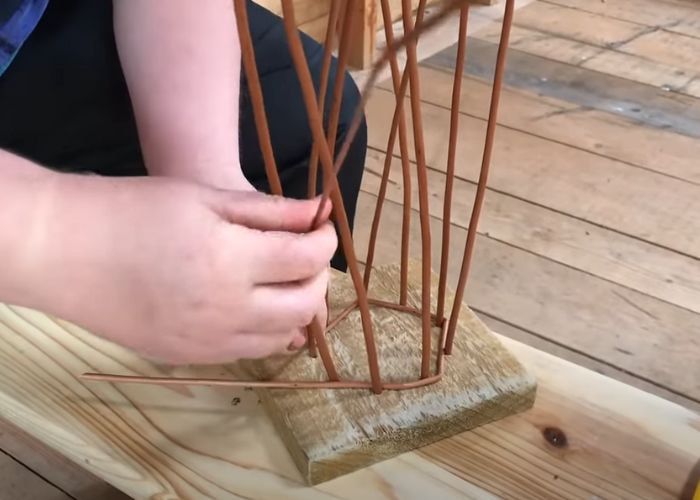
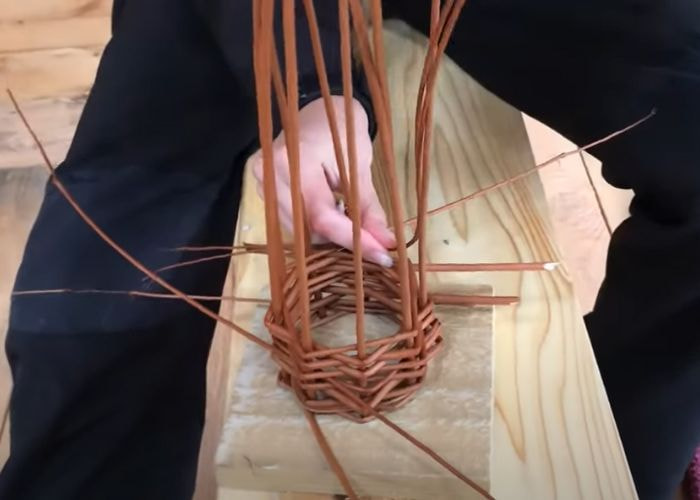
Step 3: Adding a second piece of willow
Once you’ve reached the desired height, you can add a second piece of willow to create a food holder for the feeder.
Take two small, long willow branches, intertwine them, and wrap them around the main branches of the bird feeder towards the end of the basket.
Bend the excess of the two branches upward in preparation for the next step.
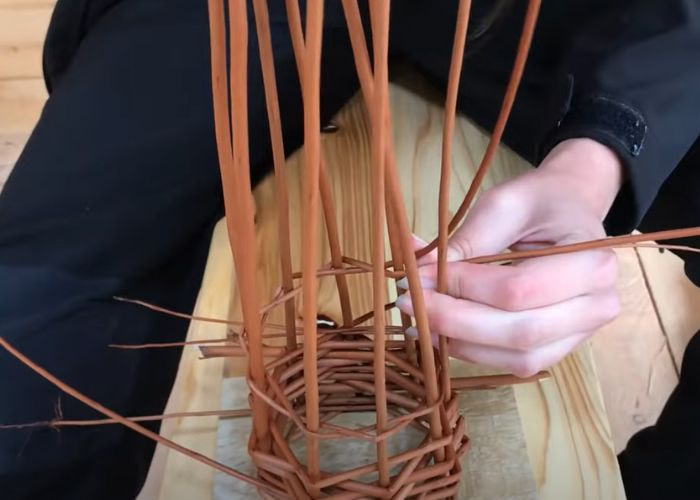
Step 4: Assembling
Once the desired length of the feeder is achieved, take another willow branch and tie it tightly around the branches.
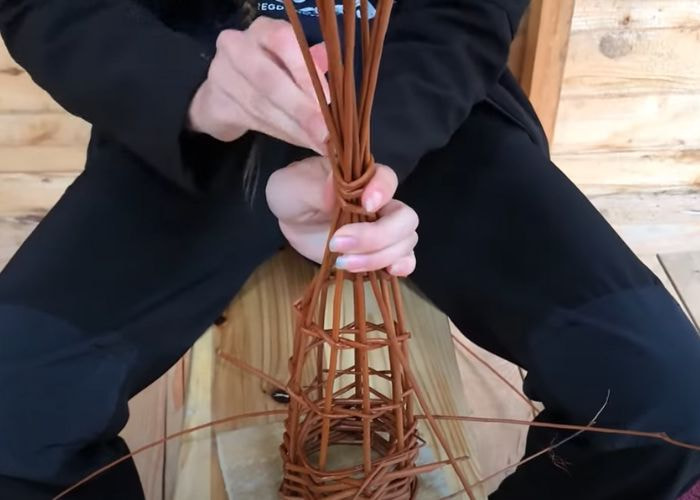
Step 5: Trimming excess branches
Trim any excess branches or twigs using pruning shears or secateurs. Make sure the feeder has a neat and tidy appearance.
Step 6: Make the handle
Take a long piece of willow branch and bend it into a loop to form a handle. Secure the ends of the handle to the edges of the bird feeder by weaving them into the body. You can use string to tie it securely.
Ensure the handle is sturdy enough to withstand the weight of the feeder when filled with birdseed.
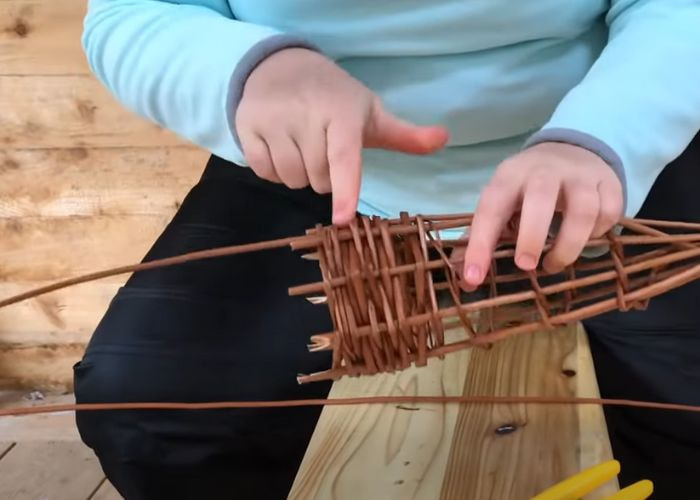
Once you’ve completed these steps, your willow bird feeder should be ready to hang and attract birds to your garden or backyard. Enjoy watching the birds visit and feed from your homemade creation!
2. FAQs
2.1 Are willow branches safe for birds?
Willow branches are safe for birds; they naturally contain aspirin, which can help alleviate pain for birds and keep them healthy if consumed in moderation. The most important thing to remember when selecting willow branches for your birds is to avoid branches from trees that have been treated with pesticides or other chemicals. These chemicals can be harmful to your birds if ingested.
You should also steer clear of willow branches that have been treated with paint or varnish, as these products may contain toxic substances that can be harmful to your birds if ingested. If you are unsure about the safety of a specific willow branch, it is advisable to seek the advice of a veterinarian before feeding it to your birds.
2.2 How do birds know when you fill the feeder?
There are several factors that can help birds recognize when you are supplementing their food. One of them is their ability to perceive colors. Birds can distinguish the color of food and the container it’s in, allowing them to notice any changes. Another factor is the birds’ sense of hearing.
They can pick up on the sounds when you pour food into their container or the calls of other birds feeding. Additionally, the birds’ learning ability plays a role. Birds can remember the times and locations when you usually provide them with food, making them return at those times.
In this way, birds have various ways to know when you are supplementing their food, contributing to their survival in challenging environments.
2.3 How long after putting up a bird feeder will birds come?
There are several factors that can help birds recognize when you are supplementing their food. One of them is their ability to perceive colors. Birds can distinguish the color of food and the container it’s in, allowing them to notice any changes. Another factor is the birds’ sense of hearing.
They can pick up on the sounds when you pour food into their container or the calls of other birds feeding. Additionally, the birds’ learning ability plays a role. Birds can remember the times and locations when you usually provide them with food, making them return at those times.
2.3 How many times should you fill a bird feeder?
The frequency with which you should fill a bird feeder depends on various factors, including the size of the feeder, the number of birds visiting, and the type of birdseed you use. Generally, it’s recommended to check and refill the bird feeder regularly to ensure a constant and reliable food source for the birds.
In busier seasons, you may need to fill the feeder more frequently, while in slower seasons, it may require less frequent refilling. Observing the consumption rate and the activity of birds around the feeder can help you gauge how often it needs to be filled to keep the avian visitors satisfied.
3. Conclusion
In conclusion, creating a bird feeder from willow branches can be a rewarding and environmentally friendly project for bird enthusiasts. This guide has outlined step-by-step instructions for constructing a charming feeder that not only adds aesthetic appeal to your garden but also provides a reliable food source for your feathered friends.
By following these above instructions and considerations, you can enjoy the beauty of nature in your garden!
Happy crafting!












